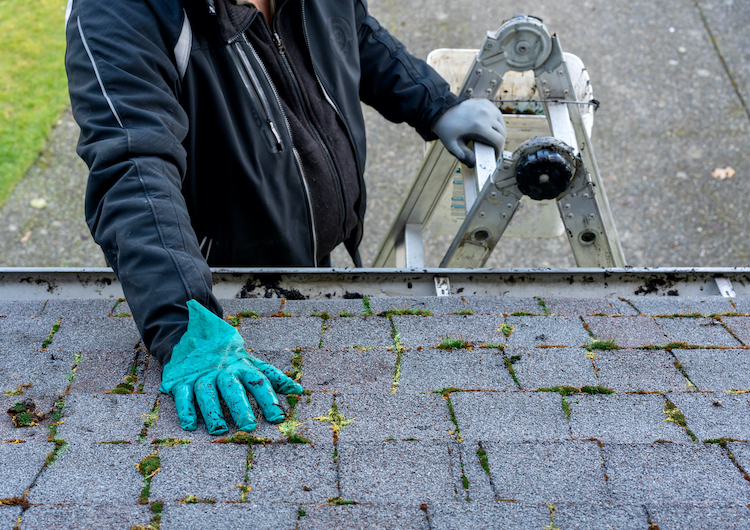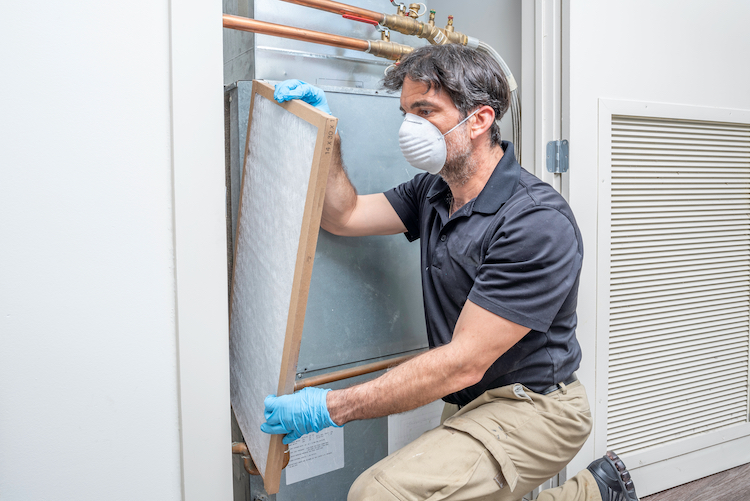The Ultimate Seller Home Inspection Checklist
Home inspections aren’t just for buyers. Follow this seller home inspection checklist to help understand needed repairs and prepare your house for sale.
You’ve decided it’s time to sell your house, but it’s in as-is condition. You’ve adjusted your listing price to compensate, but are worried about what will happen when a potential buyer has an inspection. Don’t get caught off guard by waiting until the last minute to find out what’s in need of repair in your home.
As a seller, it’s not out of the ordinary to have an inspection done on your house before you list it. You’ll then see problem areas in advance of any buyers and can react to them. You can do this by lowering your asking price, or making a few repairs yourself.
Even if you don’t hire a professional, you can do a cursory evaluation of your home with this thorough seller home inspection checklist. Know where to look, what to look for, and avoid any surprises once your house goes under contract.
Walk your property
The place to start in your home inspection is outside the house. You want to make sure you’ve got curb appeal and have properly maintained the area around your house. Check for telltale signs that something might be wrong. Look for:
- Standing water, especially after it rains to make sure there’s proper drainage.
- Manicured trees and shrubs. Nothing should physically touch the house.
- More than a few cracks in driveways and walkways. This isn’t a deal breaker for everyone, but could be something a buyer asks you to replace before closing.
- Rot in any wooden portions of your yard. Check the fence, deck, and anything else made out of wood.
Eyeball your exterior

While you’re outside looking at the yard, check on the exterior of your home. Since you spend most of the time at home inside, it’s easy to miss issues on the outside of your house until the situation has gotten big. During a seller inspection, pay close attention to your roof, window frames, and siding. It should all be in tiptop condition. Look for:
- Foundational cracks. You shouldn’t have any since they can be a sign of a more significant issue.
- Siding or stucco wear and tear. Again there shouldn’t be any cracks. For siding, panels should also not feel loose or show any signs of decay or curling.
- Wood frames around doors and windows that are free of rot and cracks.
- Windows in good condition without any cracks or damaged screens. You also want to note if moisture is coming in between the panes of your widow. That’s usually a sign they need replacing.
- Overall roof condition. You don’t want missing shingles or damage to the flashing and fascia. Damaged shingles are also a sign a roof might need replacing. If you have too many of those, consider getting them repaired.
- Clogged or damaged gutters. It’s a good idea to have your gutters cleaned regularly, but if it has been a while, doing it right before you list is beneficial.
- Condition of the chimney cap. While it’s also a good idea to get your chimney cleaned if you haven’t done so for a while, try to get a look at your chimney cap. Sometimes this is best seen with the help of a drone if you don’t want to call on a professional. Chimney caps should be in good condition, They’re frequently pinged on home inspections.
Take the inside from top to bottom
When looking through the interior of your home, it’s best to start at the top and work your way down. Hit the attic first, then take the main living floors room-by-room. Move on to the basement, if you have one, last.
Attic
Attics are rarely closely looked at when you’re living in the house. But they make up a critical item in your seller home inspection checklist. Your attic should be checked yearly if you have a termite bond, and it’s important to handle issues as they arise at the top of your house. Small attic issues almost always become something bigger if ignored. Look for:
- Evidence of a rodent or insect infestation.
- Frayed or spliced electrical wires.
- Standing water.
- Damaged vents or issues with ventilation in general.
- Sufficient insulation.
- Holes leading to the outside.
Interior space
Each interior room of the house pretty much deserves the same once-over before you sell your home. Look for:
- Stains, chips, or cracks on floors, walls, ceilings, and interior doors.
- Windows that you can open and close without issue.
- Good airflow from vents.
- Cracks or damage on the fireplace.
- Lights and electrical outlets to all work properly.
- Smoke and carbon monoxide detectors to be up-to-date and working.
Kitchen
Of course, having all your appliances work is a huge necessity when it comes to the kitchen, but did you also know that you’re required to have GFCI outlets within six feet of your sink?
It’s surprising how many outlets aren’t up to code when it comes to the location of the plug and water. An inspector will keep a close eye out for this issue, and it’s something you can have an electrician change. Check those first, and afterward, look for:
- Leaks in pipes under the sink.
- Cabinets and drawers to easily open and close and look to be in good condition.
Bathrooms
Most buyers spend their time looking at bathrooms for their style. Do they like the hardware, the tile, the bathtub? It’s the inspector who goes in with a critical eye to really see how your bathrooms stack up. Check out your bathroom like they will and look for:
- A working exhaust fan that takes the air all the way out of the house.
- Good water pressure in sinks, showers, and tubs.
- Leaks in pipes or any staining from previous leaks.
- Chips in caulking around tub and tile.
- A stable toilet that doesn’t rock or have any staining around the base.
Basement/crawl space
You’ve made it to the bottom of your home. Time to check out the foundation once again, but from the inside. Look for:
- Any evidence of moisture.
- Adequate venting.
- Proof of insect or rodent infestations.
- Any wooden elements to be in good condition without sagging, damage, or decay.

Give your utilities special attention
This area always has the potential to be a source of conflict between buyers and sellers. You may see your slightly old AC unit as still having a few more years of life left in it. It works pretty well, and you haven’t had to make any repairs in a while. A buyer might see the same unit and want you to replace it solely because the inspector says it’s a little on the old side.
It’s a fine line when it comes to utilities so give your buyers as little to worry about as possible. To make sure everything is in good condition, look for:
- Leaks in plumbing.
- Adequate performance of your water heater. Hot water should get between 118-125 degrees Fahrenheit.
- All visible electrical wiring to be in good condition with the fuse box also in working order.
- Clean air filters in your AC and visible ductwork in good condition.
Is your seller home inspection checklist complete?
Once you’ve assessed your own home, it may become apparent there are some things you should fix before listing. The main areas to focus on are issues related to code violations, safety issues, or structural problems. These issues will almost certainly come up in a professional inspection, so better to get them out of the way sooner to not jeopardize the sale of your home later.
Thankfully, if you happen to discover your foundation is sagging, or realize the wood rot in your basement is due to termites, there is an alternative to sell your home without making repairs. Working with an off-market buyer allows you to sell your home “as-is,” receiving a competitive offer that accounts for renovation costs.
No repairs needed
At Sundae, we help homeowners get a better deal for their homes, as-is. No need to stage your home or make any repairs, taking the stress out of the equation.
Ready to Get Started?
Sell as-is. Pay zero fees to Sundae. Move on your time. No repairs, cleanings, or showings.
